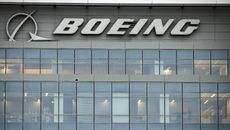7 Stocks to Buy and Hold for the Next 15 Years
Some of Disney's prime assets are folks who never ask for a raise, including Goofy, Cinderella and Luke Skywalker.

My advice to investors has always been to buy stocks for the long term. What’s long? When you purchase a stock, you should think of yourself as a partner in the business forever—or until you need the cash. But forever, or even 30 years, is way out on the dim horizon. A more manageable view might be 15 years. If you invest $10,000 today in a stock that returns an average of 12% per year (a return that is two percentage points higher than the historic long-term return of Standard & Poor’s 500-stock index), you’ll end up with about $55,000.
Not all stocks, however, are suitable long-term buys. A company you expect to be wedded to for 15 years should have six characteristics: products that can endure and aren’t fads; a history of leaders who can adapt; a strong balance sheet; a benign competitive environment; a track record of innovation balanced by vigilance against taking on too much risk; and a strategy that looks beyond the next year and certainly beyond the next quarter.
It’s hard to find all of those traits in one company. But if you’re going long, here are seven that have staying power and a good shot at delivering 12% annualized returns.

Sign up for Kiplinger’s Free E-Newsletters
Profit and prosper with the best of expert advice on investing, taxes, retirement, personal finance and more - straight to your e-mail.
Profit and prosper with the best of expert advice - straight to your e-mail.
Building planes is a long-term business. It took seven years for Boeing (symbol BA) to translate its first order for the 787, a plane that cuts fuel consumption by 20% and can fly up to 8,300 nautical miles, into an actual jet that could be delivered to a client. The 787 may become as successful as the 737. More than 10,000 of those workhorses have been sold since 1965, and Boeing continues to sell about 500 per year. The company’s only significant competitor is Airbus. Although Boeing has had manufacturing problems in the past, a recent analyst report from Credit Suisse says the company is emphasizing “execution as the number-one priority.” Boeing, the report adds, will tackle innovation “in smaller, less risky, increments, rather than a ‘moon shot’ approach.” That’s the kind of balance I like in a long-run company.
Meanwhile, the demand for passenger planes is strong. Boeing increased its backlog from 3,771 aircraft at the start of 2012 to 5,237 at the end of June. Despite doubling over the past three years, the stock, at 15 times estimated earnings over the next four quarters, doesn’t seem overpriced. (All prices and related data are as of July 31.)
Like it or not, one of the surest long-term bets is the continued expansion of the federal government. And that means the continued growth of the Washington, D.C., area as well. My favorite D.C. play is Washington Real Estate Investment Trust (WRE), a venerable firm founded in 1960 and the landlord to tenants in 54 shopping centers, office and medical buildings, and apartments in and around the capital. As a REIT, the company pays no corporate income taxes as long as it passes along 95% of its profits to shareholders as dividends. The current yield is an attractive 4.4%. Moreover, the stock has a record of holding up well in rough markets. In 2008, when the S&P 500 tumbled 37%, Washington REIT lost just 4.4%. Over the past 15 years, shares have returned an annualized 7.5%. That’s below our 12% target but three full percentage points per year better than the return of the S&P 500 over the same period.
I hope you invested in Netflix (NFLX) when I first recommended it in 2003. Since then, it’s up by a factor of about 40. I still think this is a great company for the next 15 years. CEO Reed Hastings, 54, has shown that he can adapt brilliantly, combining such Netflix-originated content as House of Cards with a video platform that as of June 30 had 48 million paid users (up 35% in one year). And Netflix has barely scratched the surface overseas.
With a 15-year view, you should generally stay away from stocks with enormous market capitalizations, such as Apple (AAPL). If Apple’s shares, recently $96, were to appreciate at a 12% annual rate, its market capitalization would exceed $3 trillion by 2029. That’s hard to swallow, but I could easily see Netflix’s market cap growing 12% a year, to about $140 billion, in 15 years.
Very few companies increase their earnings nearly every year in what I like to call a “beautiful line.” One of them bears the name of a guy who drew beautiful lines for a living: Walt Disney Co. (DIS). Some of Disney’s prime assets are folks who never ask for a raise, including Goofy, Cinderella and Luke Skywalker. Disney also has a powerful distribution system: studios, video games, music, theme parks, cruise ships, eight TV stations (mainly in big cities such as New York and Los Angeles) and such networks as ABC, ESPN and A&E. Disney has a beautiful balance sheet, too, with a top rating of A++ for financial strength from the Value Line Investment Survey. My only hesitation stems from Disney’s size. With a market cap of about $150 billion, it’s on the edge of my comfort zone.
I love companies that forge an emotional connection with their customers. Whole Foods Market (WFM) does just that, and it’s a relationship for the long term. Sales in the fiscal year that ends in September 2015 should reach $16 billion, up from $8 billion in the year that ended in September 2009. Still, the stock has had a rough go of it lately. It has dropped more than 40% since October 2013, mainly because management has been lowering earnings estimates. Long-term investors shouldn’t worry. With an excellent balance sheet and only 362 stores worldwide, Whole Foods has a great runway for growth as food that is organic, fresh and local goes mainstream. (Safeway, by contrast, has 1,331 stores.) The stock returned 14.7% annualized over the past 15 years; it’s not hard to imagine a repeat.
Many years ago, I touted FedEx (FDX) as the “quintessential Internet stock.” I meant that as more people ordered online, they would need FedEx and its rivals to deliver the goods. What I missed was how FedEx has exploited Internet technology to track and expedite its shipments. With drones (I’m not kidding) and other innovations, FedEx will only become more efficient and essential. Forrester Research predicts that 10% of all retail sales in 2017 will occur online, and although that is impressive, there’s still a lot of room for FedEx to expand.
Shareholders of McDonald’s undoubtedly wish the company hadn’t sold its big stake in Chipotle Mexican Grill (CMG) in 2006. Since then, Chipotle’s stock has risen more than tenfold, and I wouldn’t be surprised if the chain someday has more outlets than its erstwhile benefactor. Chipotle sells burritos and tacos made with organic pork and chicken and ingredients sourced no more than 350 miles away from each restaurant.
The company is growing like crazy. In the quarter that ended June 30, sales at stores open at least one year rose 17% from the same quarter one year earlier. Chipotle plans to open at least 180 new outlets in 2014, an annual growth rate of 11%. And with only one-eighth the revenues of McDonald’s, Chipotle has a lot of room to expand. Its stock is pricey, as you would expect with such a fast-growing company, but good, natural Mexican-style food appeals to a young audience and to the fastest-growing ethnic group in America. It is the future.
Lard your portfolio with stocks like these, but also diversify with a few index funds. As usual, I make no guarantees. Use my choices as a starting point for your own research, and happy long-term hunting.
James K. Glassman is a visiting fellow at the American Enterprise Institute. His most recent book is Safety Net: The Strategy for De-Risking Your Investments in a Time of Turmoil. He owns none of the stocks mentioned.
Get Kiplinger Today newsletter — free
Profit and prosper with the best of Kiplinger's advice on investing, taxes, retirement, personal finance and much more. Delivered daily. Enter your email in the box and click Sign Me Up.

-
 States That Won't Tax Your Retirement Income in 2025
States That Won't Tax Your Retirement Income in 2025Retirement Taxes Several states don’t tax Social Security benefits, 401(k)s, IRAs, and pensions. But you may still have to pay state taxes on some incomes.
By Kate Schubel Published
-
 Build Your Dream Retirement With These Five Steps
Build Your Dream Retirement With These Five StepsDreaming about life after work? Turn your dreams into a concrete, actionable plan by nailing down the why, what and how of your retirement.
By Keith Wiltfong, CFP®, CIMA® Published
-
 Stock Market Today: Trump Tariff Worries Pressure Stocks
Stock Market Today: Trump Tariff Worries Pressure StocksStocks swung lower Friday after the White House confirmed it will impose tariffs on Mexico, Canada and China beginning tomorrow.
By Karee Venema Published
-
 Stock Market Today: Stocks Surge Ahead of Fed
Stock Market Today: Stocks Surge Ahead of FedTech stocks led the way higher Tuesday as Wall Street looked ahead to Wednesday's Fed announcement.
By Karee Venema Published
-
 Boeing Stock Pops After CEO Gives Upbeat Cash Flow Outlook: What to Know
Boeing Stock Pops After CEO Gives Upbeat Cash Flow Outlook: What to KnowBoeing stock is the best Dow Jones stock Tuesday as a positive cash flow outlook offsets a fourth-quarter miss.
By Joey Solitro Published
-
 Stock Market Today: Dow Dives 729 Points but Bounces Back
Stock Market Today: Dow Dives 729 Points but Bounces BackInvestors can still hope for a Santa Claus rally over the next three trading days.
By David Dittman Published
-
 Stock Market Today: Stocks Pause but Nvidia Hits New All-Time Highs
Stock Market Today: Stocks Pause but Nvidia Hits New All-Time HighsThe major equity indexes were mostly mixed on Monday, but Nvidia hit yet another new all-time high.
By David Dittman Published
-
 Stock Market Today: UnitedHealth Selloff Drags on Dow
Stock Market Today: UnitedHealth Selloff Drags on DowWhile the main indexes ended in the red, Walgreens Boots Alliance had its best day since 2008.
By Karee Venema Published
-
 Boeing Looks to Raise Up to $25 Billion as Cash Woes Swirl
Boeing Looks to Raise Up to $25 Billion as Cash Woes SwirlBoeing stock is higher Tuesday after the aerospace giant filed to raise as much as $25 billion and entered a credit agreement worth $10 billion.
By Joey Solitro Published
-
 Why Boeing Is Considering a Potential $10 Billion Stock Sale
Why Boeing Is Considering a Potential $10 Billion Stock SaleBoeing is reportedly considering issuing stock to shore up its cash reserves. Here's what you need to know.
By Joey Solitro Published